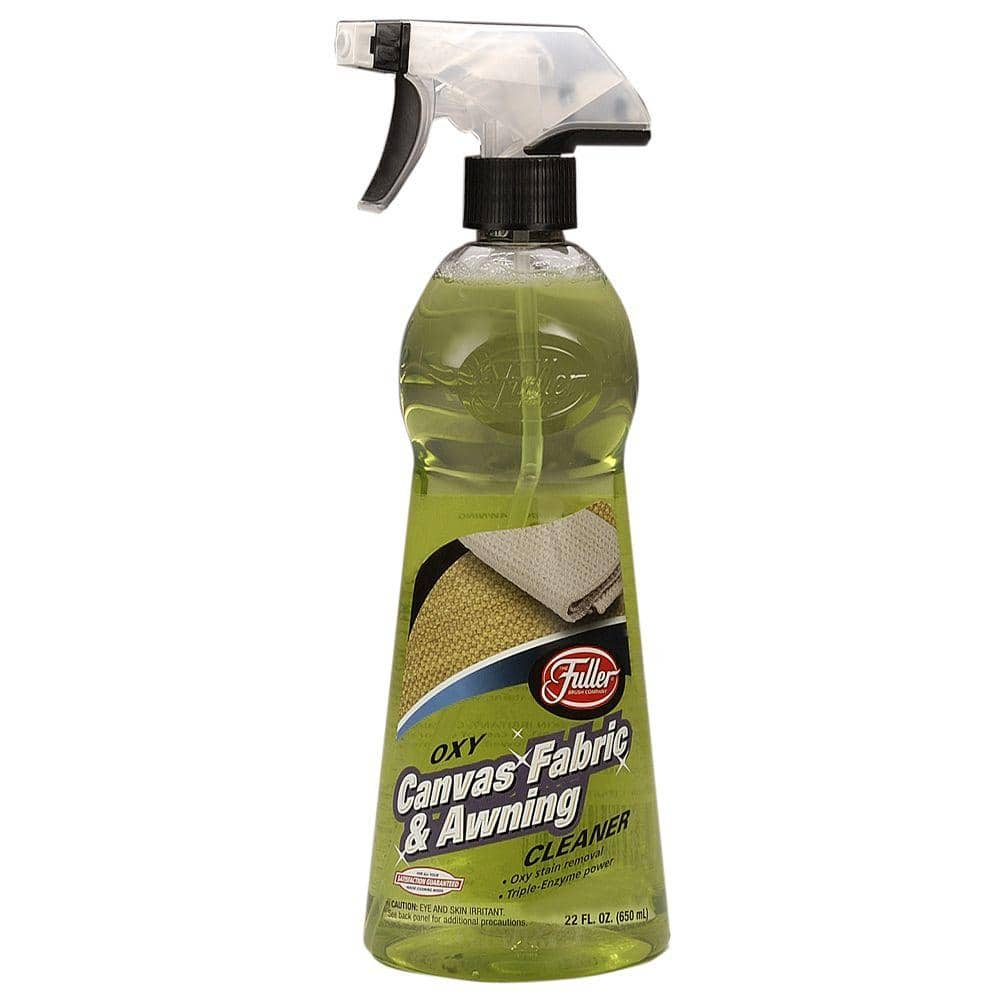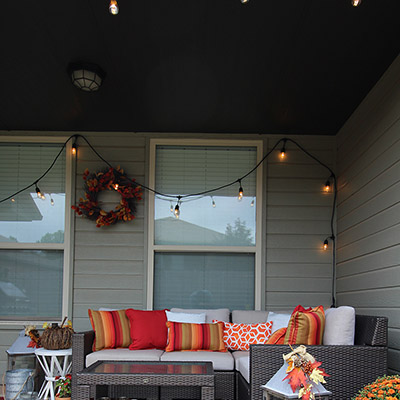Fall Home Maintenance Checklist

Last updated April 11, 2025
After a summer of fun, take on just a few simple weekend chores to get your home and yard in shape. This guide gives you tips on everything from pruning trees to cleaning grills and gutters.
Taking the time to do a little fall home maintenance can save money and help prepare you and your family to enjoy outdoor living during fall. It's also a great time to assess and repair damage to home. We've gathered some indoor and outdoor tasks that will ensure your home looks its best all year round.
Table of Contents
Rake and Remove Leaves From Your Yard
Light Pruning and Care
Clean Gutters
Repair Carpenter Bee Damage and Prevent Future Infestations
Clean With a Pressure Washer
Clean Your Grill
Rake and Remove Leaves From Your Yard
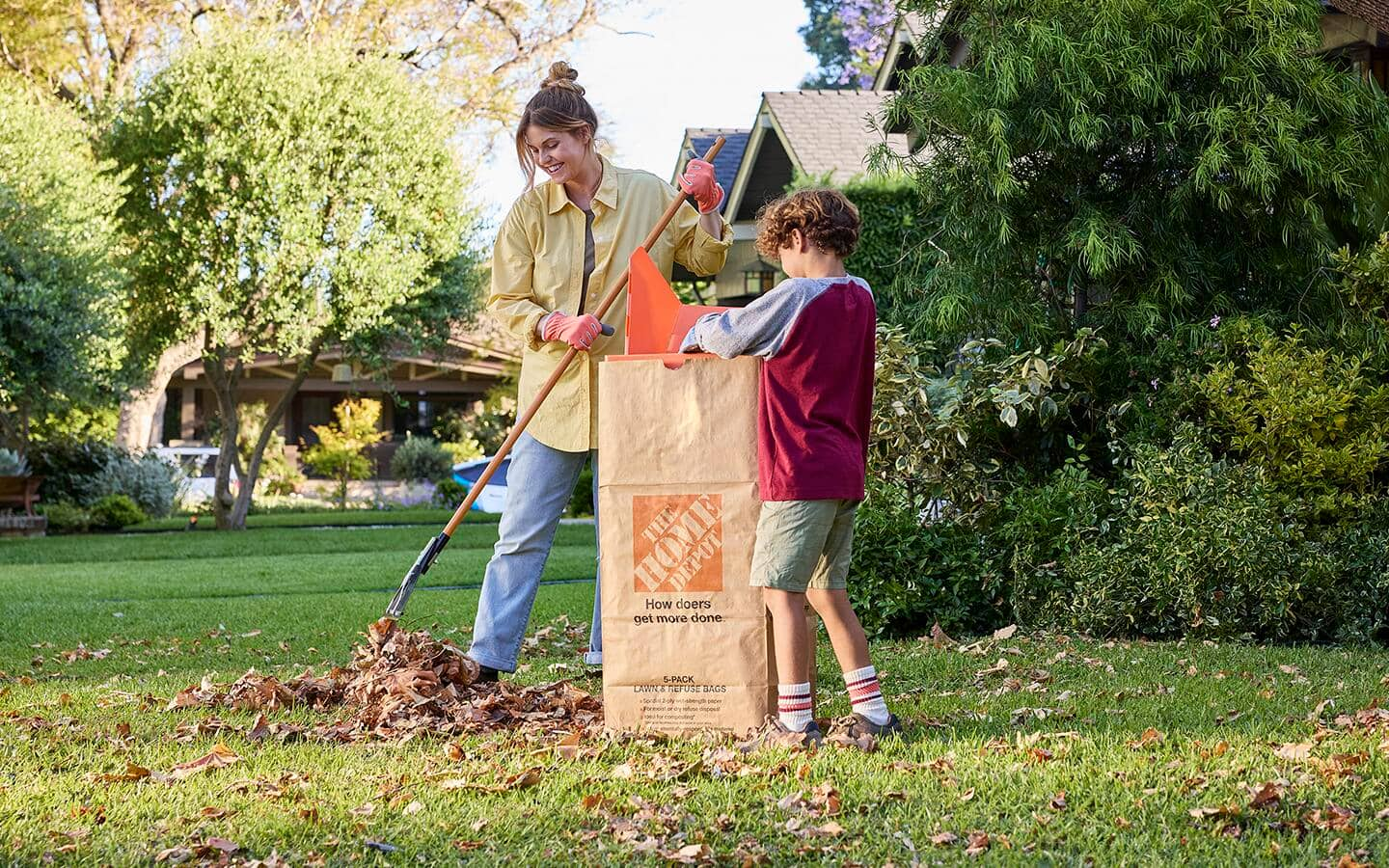
Leaving the leaves on your lawn may result in withering or dead grass. It’s best to remove leaves before they can cause damage. You can also turn your leaves into leaf litter. Leaf litter is composed of leaves, twigs and pieces of bark that have fallen to the ground and are an important component of healthy soil as well as great for composting.
To make the composting process easier, a mulching mower can help break the leaves down. If you have no use for the leaves, you can bag them up and give them to gardeners who will turn them into mulch and keep them out of landfills. Use a leaf chute to easily place leaves into a bag without bending over and putting a strain on your back.
- A leaf blower can make short work of leaves. Choose from gas-powered, electric-powered, cordless or backpack models. Look into dual-function blowers that vacuum leaves and turn them into mulch. These tools cut down the amount of leaves you have to bag by as much as 90 percent. Remember to use ear protection while using a leaf blower.
- Rake or blow the leaves into manageable piles so that you can easily dispose of them.
- Contractor bags can also be used when disposing leaves, their convenient handles make bagging up leaves a breeze.
Tip: Rather not remove the leaves? Run your lawn mower over them a few times. Cutting leaves into smaller pieces makes them into mulch. This will help keep your grass healthy during the winter.
Light Pruning and Care
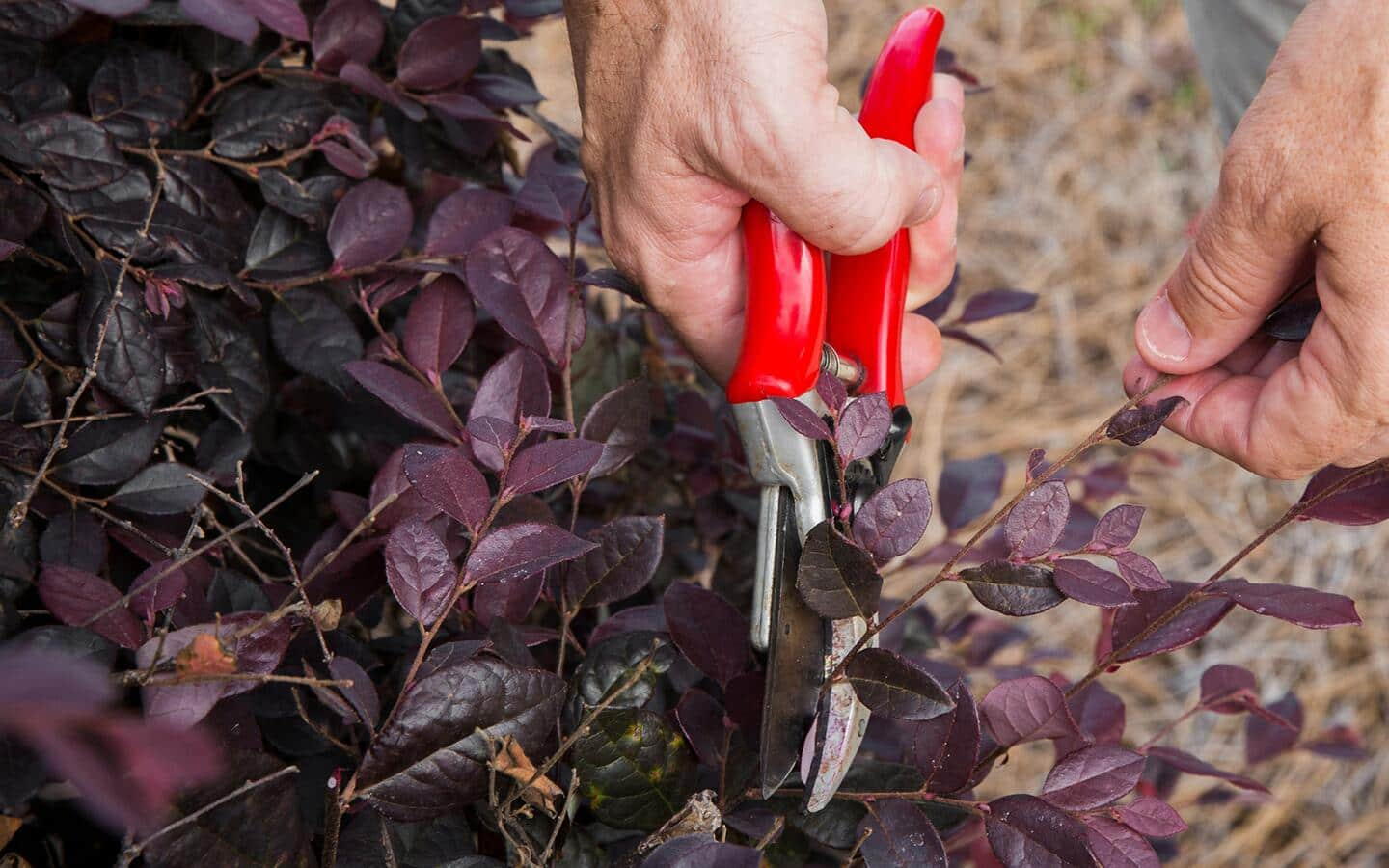
Fall isn't always the best time for pruning trees and shrubs. This activity is better suited for early spring. Extensive pruning spurs new growth that will be damaged in winter. However, a light pruning for shape and to remove damaged branches is fine in fall.
- For smaller branches, a tree pruner will allow you to reach up high. Cut halfway through the limb, then switch the direction of the cut by cutting from the opposite side of the limb until it falls.
- For large limbs of 6 inches or more in diameter, use a heavy-duty, gas-powered chainsaw. It will deliver the necessary power and torque to handle large, dense limbs. Choose a chainsaw that features a kickback-reducing system and a chain catcher. This will lessen the chance of injury if the chain breaks.
- Run the branches through a chipper to make mulch for your garden. For larger limbs, get a log splitter. Use the firewood to help heat your home in winter.
Tip: Use a wheelbarrow to catch all branches and debris that may fall while pruning.
Clean Gutters

Clean your gutters twice a year to ensure proper drainage away from your home and your home’s foundation. Inspecting your gutters ensures they're working properly throughout the year. Depending on the height of your home, you’ll most likely need an extension ladder to reach your gutters.
Once you’ve climbed up to your gutters, put on some waterproof gloves. Scoop the leaves out by hand. You can also hire a professional if you have any saftey concerns. Here’s some other tips to make cleaning your gutters easier:
- Remove the leaves on your roof with a roof rake. Position the rake behind the leaves and pull forward until they fall off the roof.
- Make a leaf-scooping tool. Cut the bottom off a half-gallon milk or juice jug. Then cut into the sides at a 45 degree angle. Grip the handle and use it as a tool to scoop out the leaves.
- Use a pressure washer gutter cleaner attachment. It’s curved to fit easily into your gutters. It shoots a powerful stream of water in opposite directions.
- Once your gutters are clean, consider topping them with a gutter topper to help keep them leaf-free.
Safety Tip: Position your ladder on level ground. Make sure it doesn’t move from side to side as you start to climb. Always keep one hand on the ladder for safety.
Repair Carpenter Bee Damage and Prevent Future Infestations
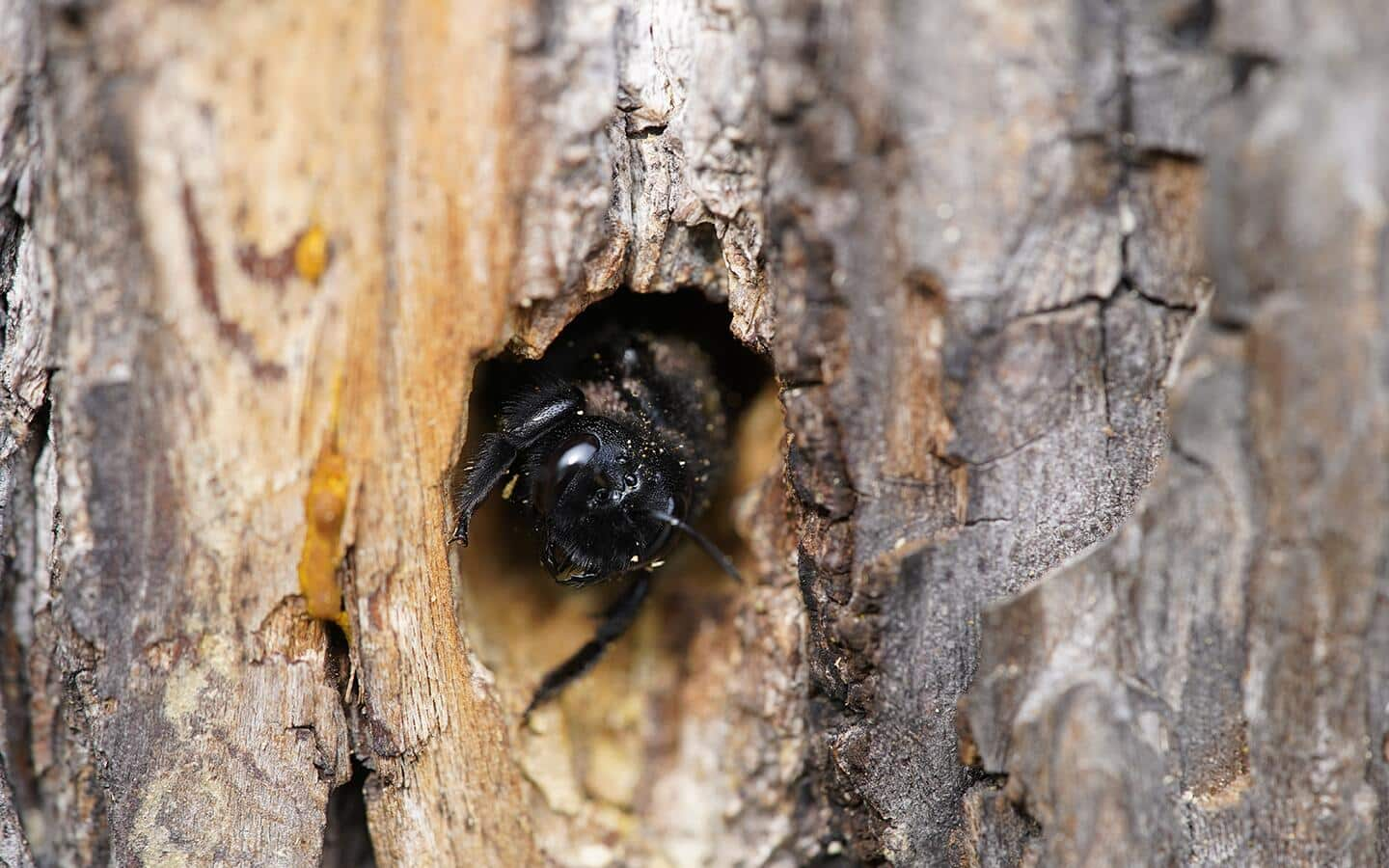
Carpenter bees get their name from boring into wood, which makes them a common problem for homeowners. The tips below will prevent the return of a carpenter bee problem if you discover them during your fall chores.
- Early fall is the best time for preventative measures because the galleries will likely be empty; the young adult bees have hatched and moved on, while the mature bees haven't settled in for winter.
- Plug up carpenter bee holes. Use plugs, putty or caulk to plug up the holes after the bees vacate the gallery.
- Carpenter bees prefer weathered or unfinished wood. Paint or varnish exposed wood surfaces around your home to make them less attractive to carpenter bees. The most vulnerable areas are windowsills, railings, decks, fences, doors, eaves and wooden lawn furniture.
- Cover exterior openings to your home with fine mesh screens or caulk for small crevices to prevent bee access.
- Hardwoods (like oak) are less appealing to carpenter bees than softwoods (like pine).
Clean With a Pressure Washer
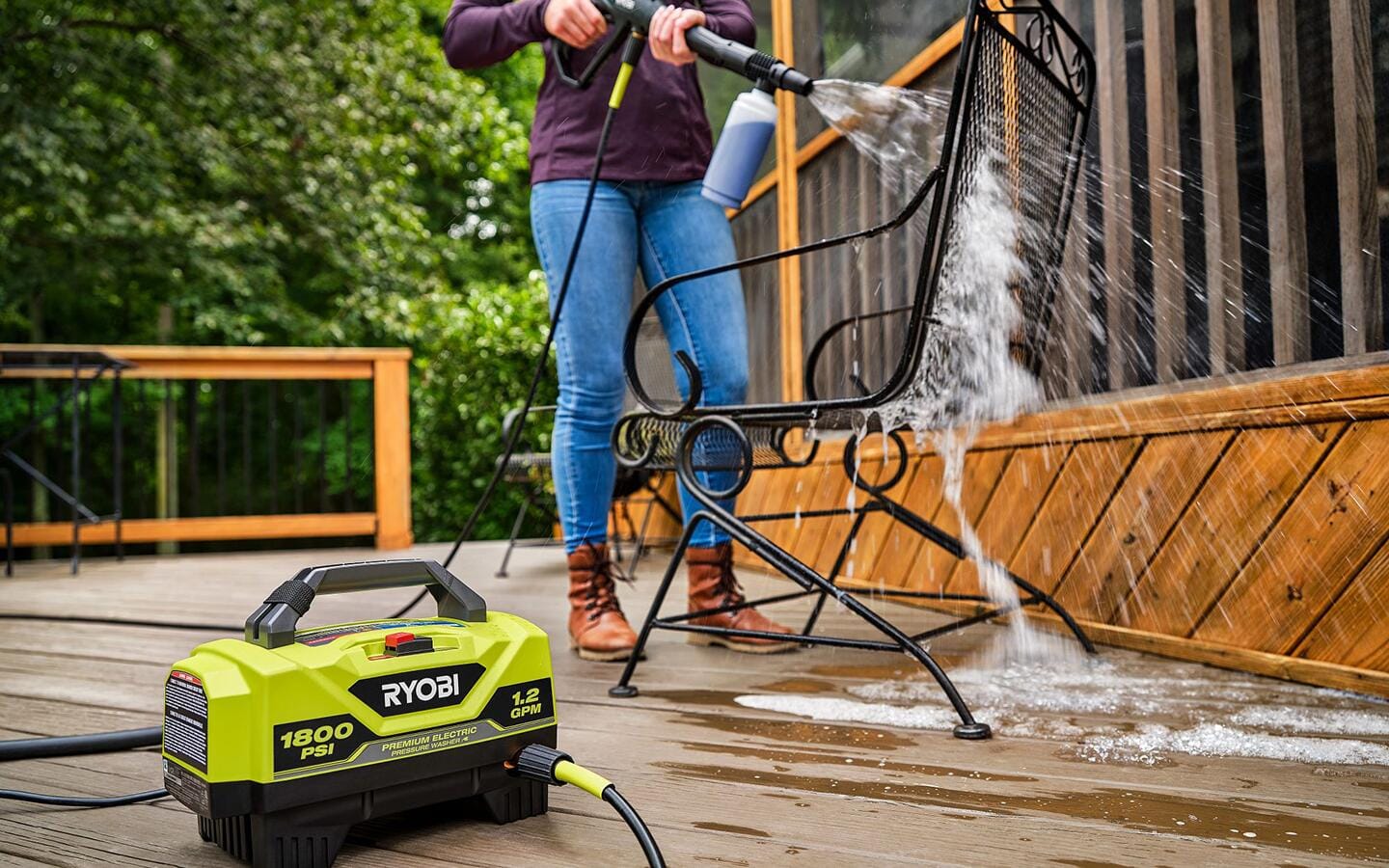
Use a pressure washer for easy, high-powered cleaning. There are electric, gas-powered and commercial-grade pressure washers. Some feature spray wands and other adapters.
- Select the all-purpose cleaner, mold and mildew cleaner or concrete degreaser you need. There are ones specifically designed for use in pressure washers to remove stubborn stains.
- Give your home’s exterior a good once over. This will loosen the baked on dirt from the summer.
- Clean your driveway, walkway, patio, porch and deck thoroughly.
- Wash your patio furniture. Make sure you select a gentle setting. Once clean and dry, cover your furniture with furniture covers. Or store them in your garage or shed for safekeeping.
- Store any cushions in a deck box until next spring.
Clean Your Grill
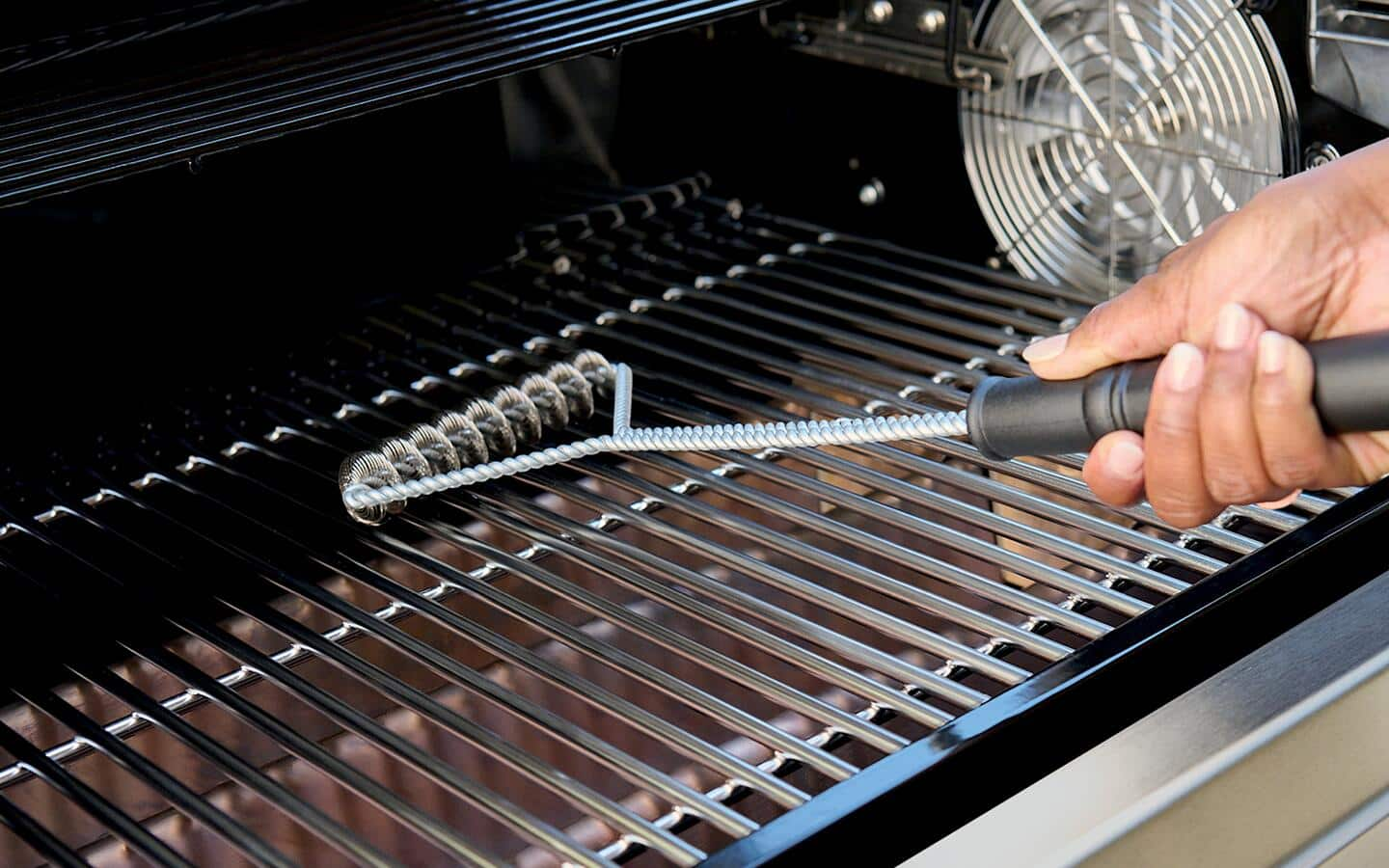
Before retiring your grill for the winter, give it a thorough cleaning. If you have a gas grill, this will require removing some of the parts.
It's a good idea to keep your grill clean so it's ready to be used throughout the fall.
- Remove cooking grates and set aside.
- Clean metal undercarriage of grill. This includes the sides around the burners.
- Scoop out burnt food remnants, grease, dirt and grime. Get as much of it as you can with a spatula and discard into a trash can.
- Spray the undercarriage with an all-purpose cleaner to help cut through the grease and grime. Thoroughly wipe away the remaining residue with an old sponge or towel.
- Clean and inspect the burners. With a wire brush, scrape off any caked-on food. Use warm water and soap to clean off the grime with a scrub brush. Let grates air dry.
- Give the clean, dry grates a light coat of oil. This will keep them from rusting during winter.
- Use glass cleaner or stainless steel cleaning spray. Polish the grill’s exterior and side trays. Use a soft cloth to avoid scratching the grill.
- Take an old broom and wipe away any grime on the outside of the drip pan.
- Cover the grill so it will be ready to go next spring.
Clean and Store Your Tools

Keep your tools working well season after season with these simple tips.
- Remove any grass clippings, leaves, dirt, mud and grime from your tools.
- Apply a light coat of oil to keep your tools from rusting over in winter.
- Store them in your garage or shed for safekeeping.
- Wipe down your machinery with an old wet towel to remove any dirt or debris.
- Once clean and dry, store them in your garage or shed for safekeeping.
- Use up the gas in your tank or drain it before storing your equipment. Gasoline left in a tank over the winter can deteriorate. Old gas can gum up your engine and ruin the carburetor. If you leave the gas in the tank, add a fuel stabilizer. These additives will stabilize fuel through the winter. A stabilizer can prevent gums and solids from forming and clogging any fuel injectors.
- Hanging up gardening tools in your storage shed can provide more space for moving around as well as storing more items.
Make Your Home Energy Efficient
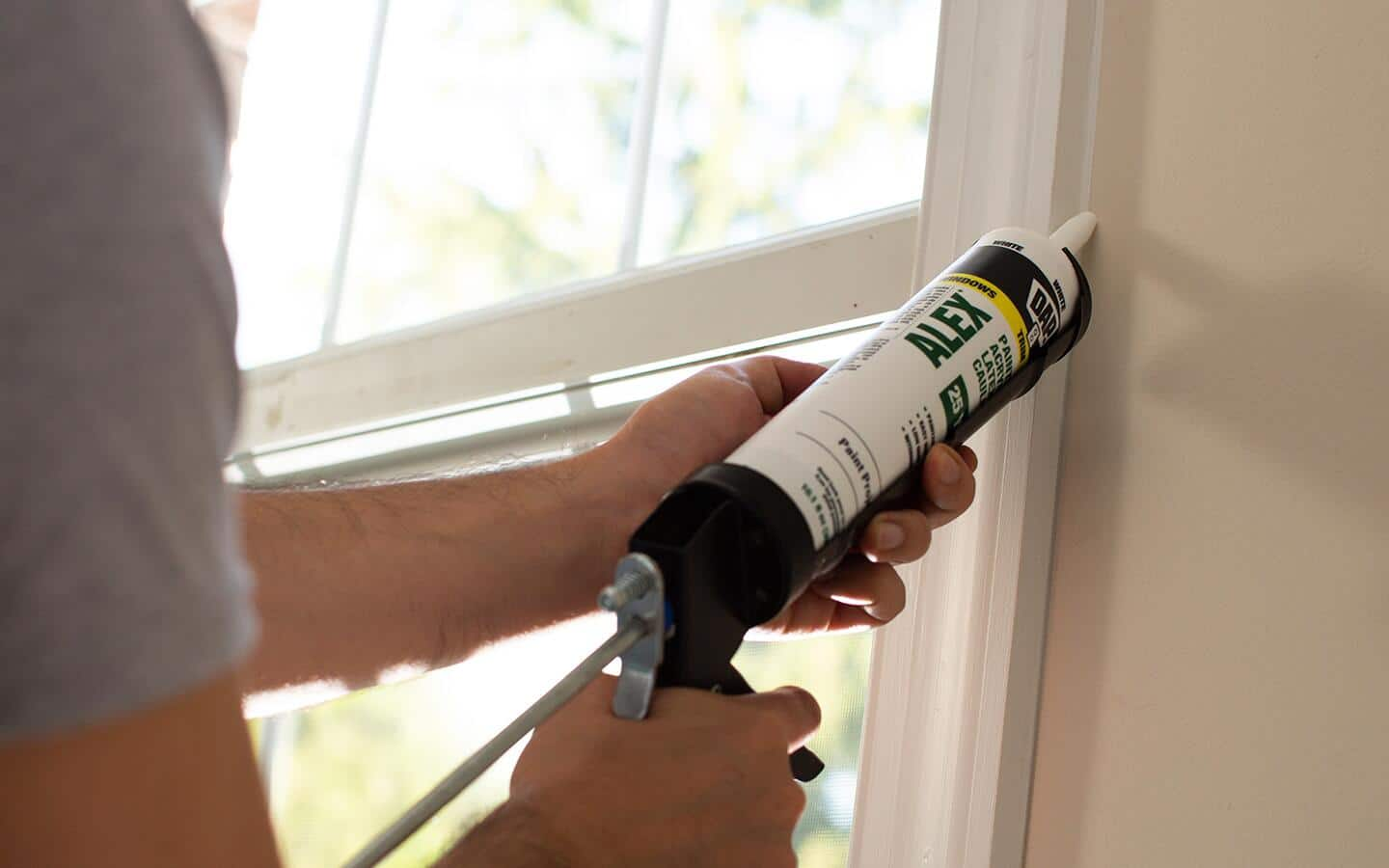
Doors and windows are the primary sources for wasted energy in most homes. Waste less energy and decrease bills with caulk, weather stripping and insulation.
- Apply caulk outside your home around the frames of your windows and doors. Add caulk just about anywhere you find a crack, loose seam or opening where cold air can creep in. Install weather stripping around doors and windows inside. It helps eliminate costly drafts and lost heat.
- Make sure your home has enough insulation overall. Keep your heating and cooling bills low by meeting the R-value for your region. The R-value indicates how well insulation resists heat transfer. R-value varies based on the type, thickness and density of the insulation. The most effective place to add insulation is the attic. Regardless of where you live, your attic insulation should equal a total R-value of at least R-38 or about 10 to 14 inches.
- Look for the R-value on your existing insulation. It’s clearly labeled on the paper moisture barrier backing. Measure your insulation’s effectiveness by how deep it is. Rolled fiberglass insulation should be at least 11 inches. If your joists are exposed, you should probably add a layer of unfaced insulation. That’s insulation without a paper backing.
- Make sure your pipes are insulated. Water vapor can accumulate on pipes and contribute to corrosion and frozen pipes. Tubular insulation is designed specifically for this purpose. It can also reduce heat loss to keep water temperatures a few degrees warmer.
- Cover outdoor water spigots with inexpensive spigot covers to help prevent them from freezing.
Fall for Mums
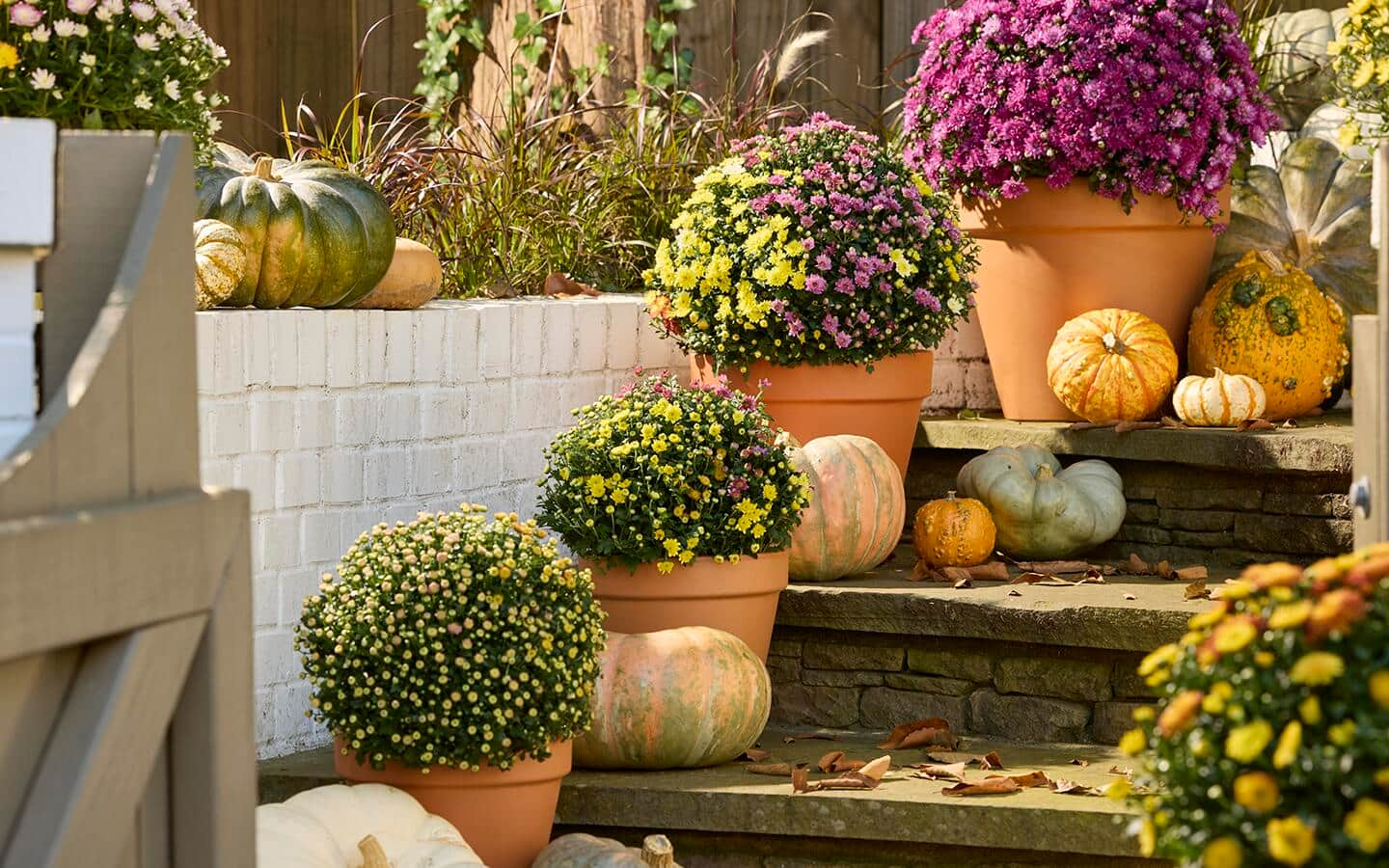
Perk up your landscape with a display of fall mums. These beautiful blooms bring harvest colors to a welcoming front porch or the view from your kitchen window.
Mums are available in a variety of shades ranging from red to orange to yellow and white. Choose one color for big impact or several shades to echo the fall colors in your landscpe.
Follow these tips for success with fall mums:
- Buy mums with tight buds. These are the freshest plants and will last the longest.
- Protect the flowers from moisture like fall rains that can turn the blooms into mush. Position planters in light shade and sun, like the edge of a sheltered front porch.
- Mums are thirsty plants. Be sure to check the moisture level in the soil daily with your fingertips. If the soil feels dry, give the plants a drink of water.
- Keep mums looking their best by trimming the spent blooms.
- When nights dip into freezing temps, cover mums with light cloth or move inside.
A fall cleanup will boost your home’s curb appeal and can save you money. Make sure you have all the tools you need such as blowers, power pruners and chainsaws, plus pressure washers, lifts or ladder.
Get all the tools you need for fall maintenance without having to make a major investment with power tool rental at The Home Depot. You can rent the tools for as long as you need them, then return them when you’re done.




